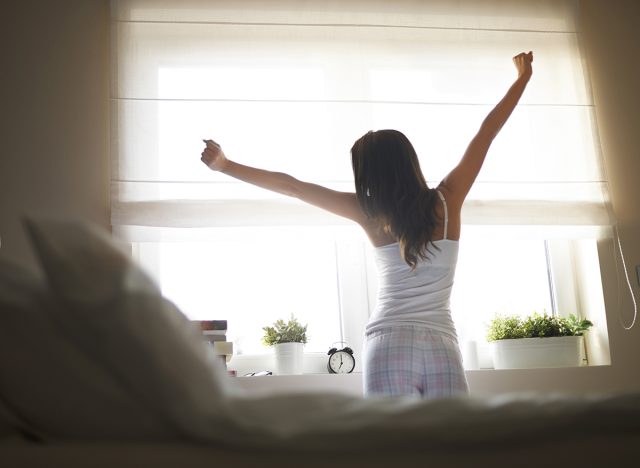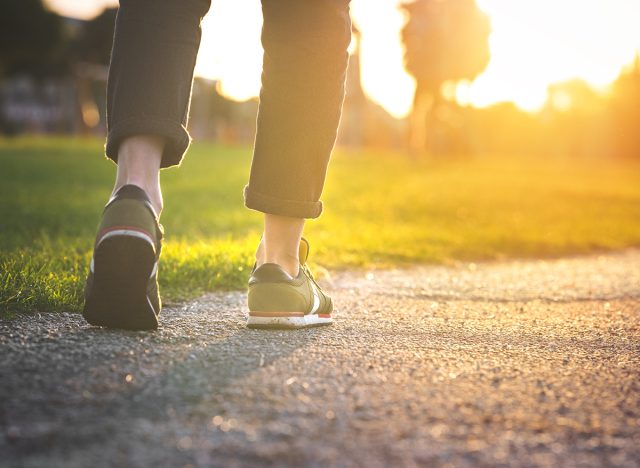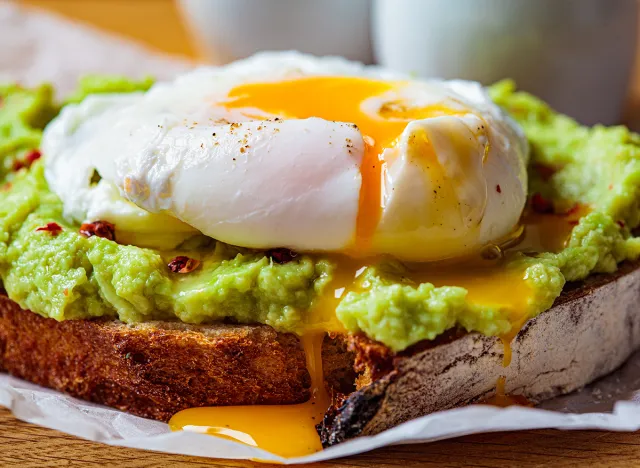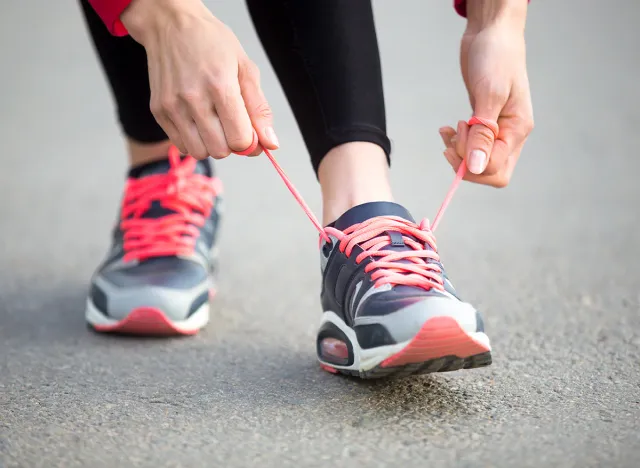I Started to Walk 1 Mile Every Day and Here's How I Made It Happen
Jenna Gestetner (@jennaxhealth) is a health and fitness influencer who regularly shares about the healthy habits that help keep her in shape. In one viral video she claims that walking daily changed her life, and reveals exactly how she formed the healthy habit. "Every single morning for the past year, I've walked a mile and this is how I've been able to stick to it," she says in the beginning of the clip. The Body Network also asked The Diet Diva, Tara Collingwood, MS, RDN, CSSD, LD/N, ACSM-CPT, a Board Certified Sports Dietitian, to weigh in on her tactic.
Walking Changed Her Health
@jennaxhealth Sandwiching a habit between two things you already do can help you stick to it I saw @Shelby | Healthy Habits taking about the cue, routine, reward sequence #healthyhabits #habitstacking #walkingroutine #morningwalk #newhabits2023 ♬ original sound – Jenna 🙂
Jenna explains that walking has been a game changer in terms of her health. "This is something that I've noticed has decreased my back pain, decreased how stiff my body is throughout the day, and increased my energy, especially in the morning," she says.
You Need to Do Three Things to Form a Habit

According to her, "to successfully form a habit" you have to do a few things. Here is what they are:
The First? A Cue

The first thing. "There is a cue," she says. This is a "non-negotiable" she adds. "So the cue is getting dressed."
The Second? A Routine

Next up, the "routine," which is another non-negotiable. "The routine is going for the walk," she explains.
The Third? The Reward

And finally, there is the reward, "and the reward is having breakfast," she says.
All Three Ensure the Walk Will Happen

"And because getting dressed and having breakfast are two things that I will never not do because of that sequence, the walk is always going to happen," she states.
Related: 4 Things I Did to Lose Stomach Fat
Expert Agrees

Collingwood is all about walking. "A daily walk is an excellent practice to increase steps and get those joints moving," she says. "Love the idea of the cue to get started with a new habit so you are pulled to do it rather than forcing yourself to do it. In order to become a habit we need to have a reward, or reason why we will do that behavior. If you feel benefits you will continue."
💪🔥Body Booster: Dress up, walk, then reward yourself with breakfast — that's your new habit! And if you enjoyed this article, don't miss 12-3-30 Walking Method: 20 Proven Tips to Lose Weight Faster.





